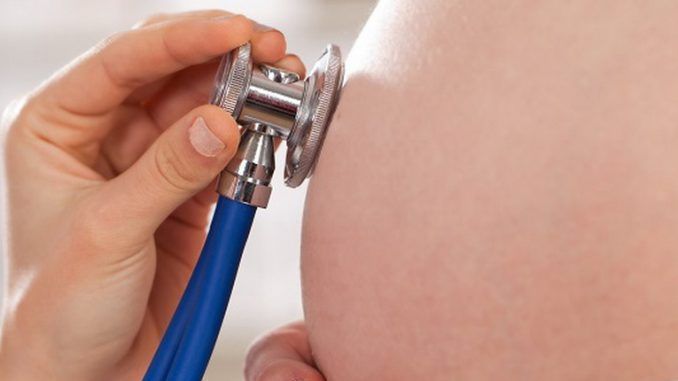Neural Tube Defects, This is What they Consist of
The Incursing Emphasis on Prenatal Prevention is lead to a growth in prenatal screening and prenatal diagnostic tests. For Example, One Prenatal Screening Test is the Fetal DNA Test, Which Can Detect The Possible Presence of Down Syndrome, Patau Syndrome, and Edward Syndrome As Early As The First Weeks of Gestation. However, The Trend is General And Also Involves Other Types of Prevention, More Related to the Diet and Lifestyle of Mothers-to-BE.
Pregnant Women Know Very Well How Important It is to take Folic Acid Every Day, Before a Planned Pregnancy and in The First Weeks of Gestation. The Substance is found in Specific Supplements, But Also In Fresh Vegetables, Legumes, and Citrus Fruits. Whatever Mode of Intake You Choose, The Important Thing is to get to 0.4MG Daily (4MG in Case of High-Risk Pregnancy) 1 . This is because folic acid is an essential element to Ensure that the neural tube Develops in the correct manner.
When it is missing, in fact, you run the risk of even lecal neural tube defects.
What is the neural tube and Why it is so important that it develops in the right way?
The neural tube is an embryonic neurological strutture that develops in the first 30 days after conception. This is Where the Spine, Spinal Cord, Skull and Brain originated from. When a folic acid Deficiency occurs, it can happy that the neural tube does not close as it shound and the following sg neural tube closure defects (ntds). However, The Widespread Use of Folic Acid Supplements Has Reduced the Incident of These Problems.
Defects in the neural tube can be open or close. The former Occhur When The Layer of Skin That Should Close the tube is absent; they includes Total Craniorachysis, Annerphaly, Myeloschisis, and Myelomenigocele. Closed defects, on the other hand, develop from day 30 and are related to a channeling problem; the category includes myelocystocele, meningocele, absence of lumbar vertebrae, and spina bifida occulta 2 .
In two cases, failure to close the neural tube always proves lethal: total craniorachysis and anencephaly. In the total craniorachisis, A complete lack of neural tube closure occurs. Brain and spinal cord are then exposed, a condition not compatible with life 2,3 . In the case of anencephaly, all or part of the cranial vault and cerebral hemispheres are missing. The brain then remains completely uncovered, as can also be seen on first trimester ultrasound scans 4 .
However severe, other neural tube defects do not necessarily lead to death. When either the posterior cranial theca or the parietal and frontal cranial thecae are missing, we speak of encephalocele. The Defect Defects Only Bethaeen the 30th and 60th Days of Gestation. Hallmarks includes Protrusion of Meninges and Part of the Brain, Which is Covered by the skin 2 .
The Other Neural Tube Defects
Another Open Defect is the Myeloschisis, Related to Failure to close the posterior part of the neural tube. The Thoracic Vertebrae Lack Posterior Arche, So The Spinal Cord Remains UNPROTEDD. This causes Its Rapid Degeneration and the Formation of Highly Visible Nerve Cords 2 .
Tea spina bifida Is one of the best known neural tube defects and has a More Severe and a Milder Form.
Tea cystic spina bifida Is characterized by the lack of posterior archas in the Thoracic and lumbosacral vertebrae. Because of This, Meninges and Cerebrospinal Fluid, or Spinal Roots and Spinal Cord, as out. Sometimes it is only the meninth as cover the cystic mass, Sometimes the skin as well. Defect Includes meningocele and myelomeningocele 2 .
Tea hidden bifidal plug Is a More Common and Less Severe Form of the Defect. Nerves and spinal cord remain intact. Only the spine is affected. Diagnosis is made by a simple x-ray 5 .
the folic acid deficiency is only one of the possible causes of neural tube defects. Genetic risk factors include ethnicity and possible familial 6 . Prenatal exposure to toxic substances and antiepileptic drugs can also increase the risk of NTD 7 . One determining factor, however, is maternal health status: obesity, diabetes, hyperthermia, and anemia are all conditions that increase the likelihood of neural tube defects.
To minimize the risk, it is important for the mother-to-be to have periodic checks on her own condition and that of the baby. In addition to regular gynecological checkups, specific prenatal screening tests can also help. Your trusted gynecologist will be able to recommend the best of those available.
Fetal DNA Testing, for Example, Can Detect Trisomies and MicrodeLerations with 99.9 PERVE RELIABILITY by TAKING A Simple Maternal Blood Sample.
